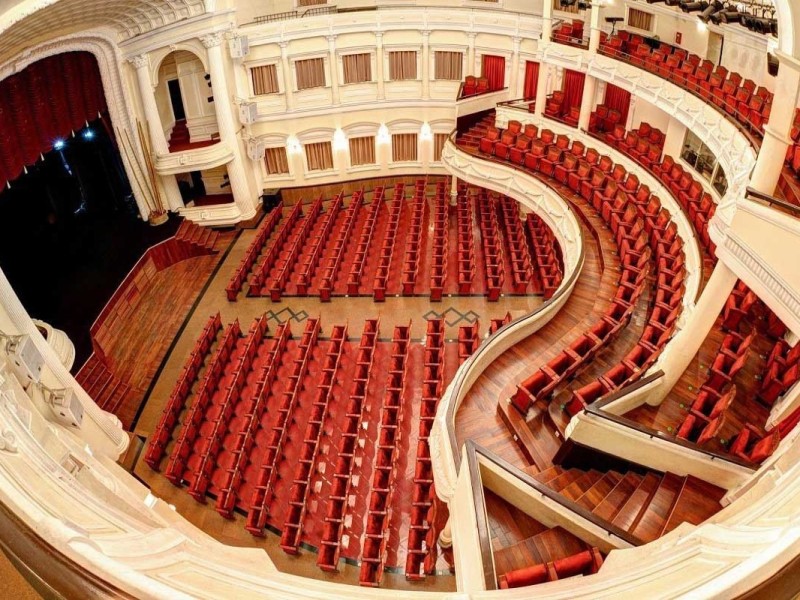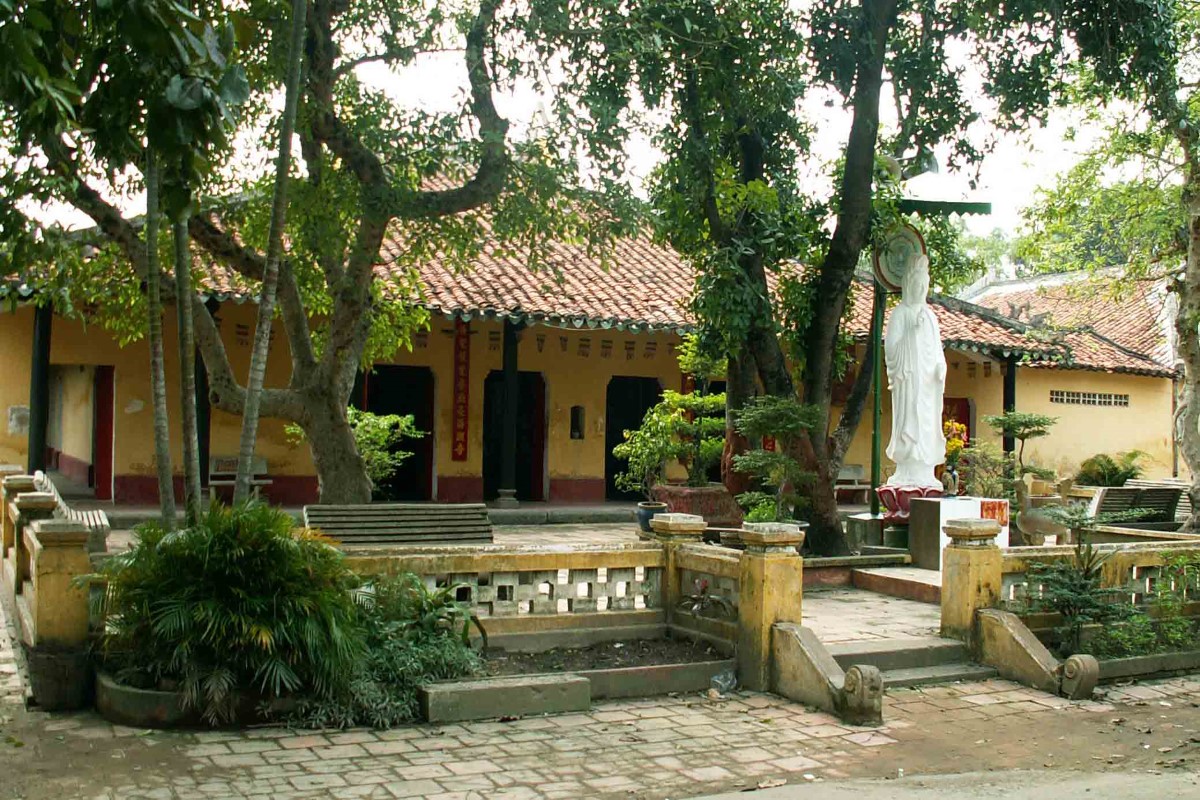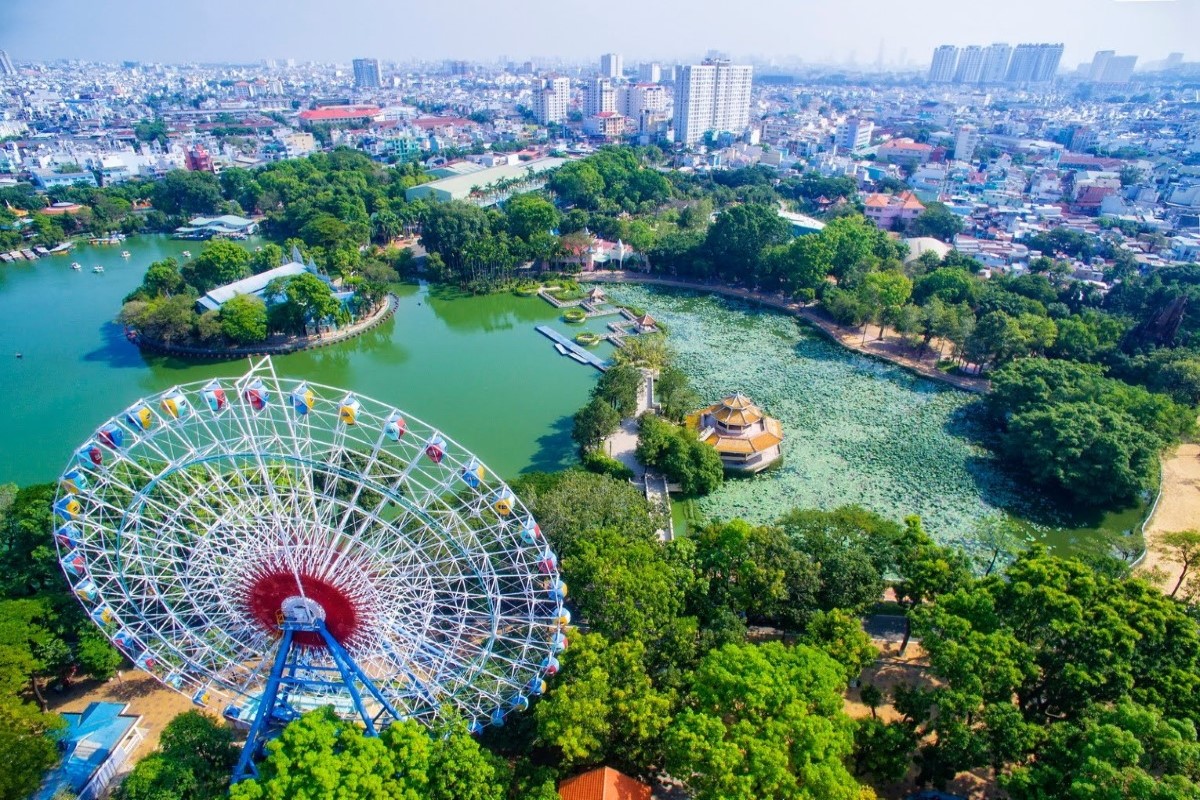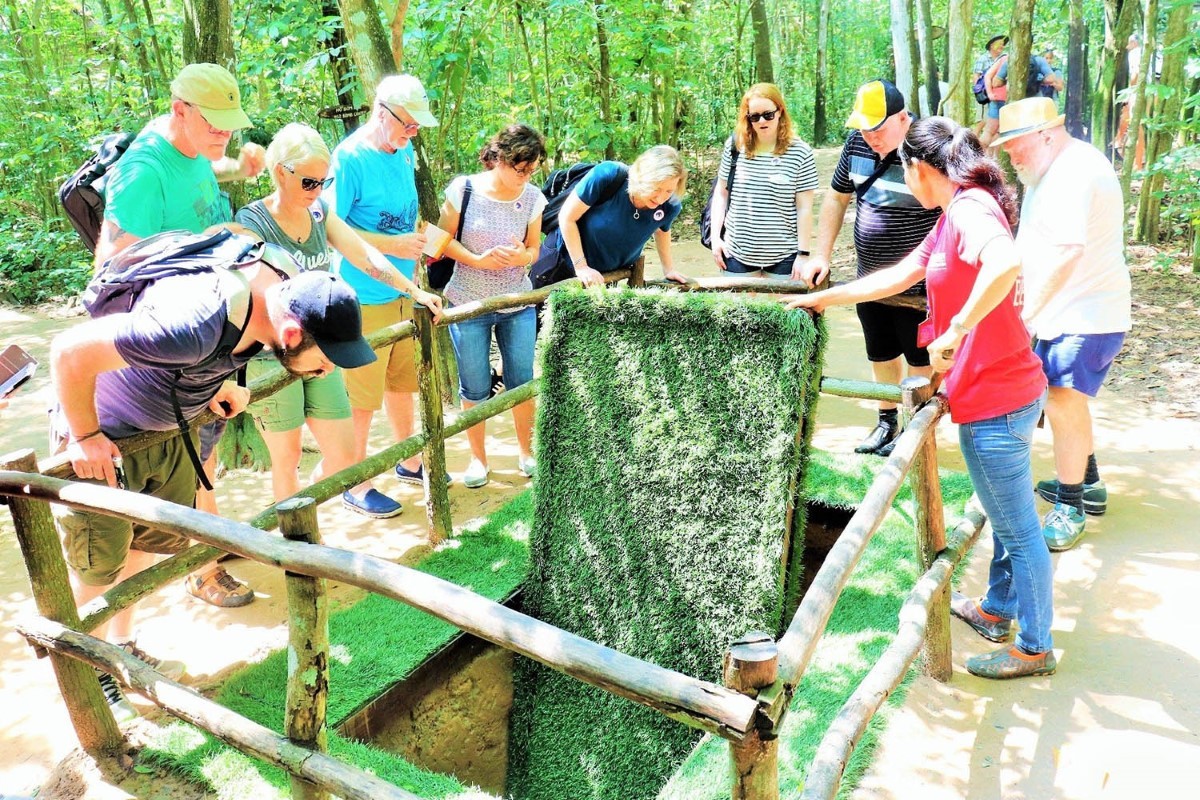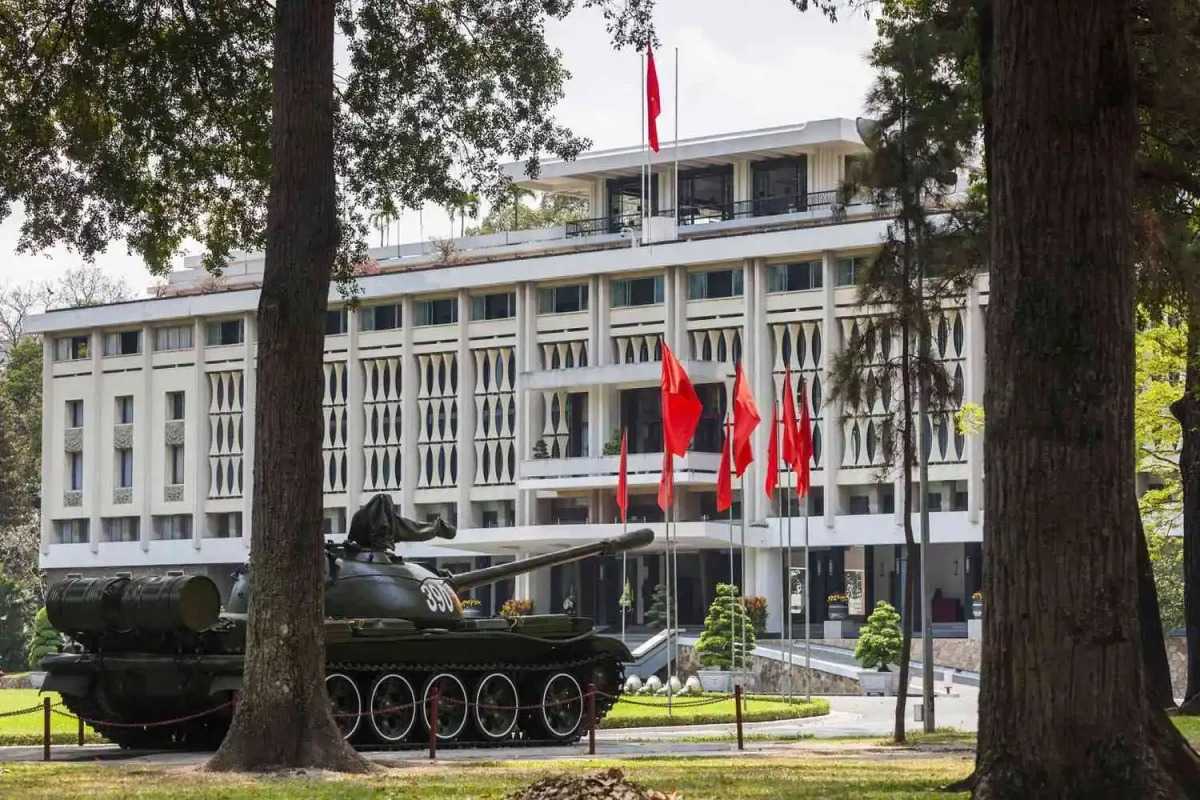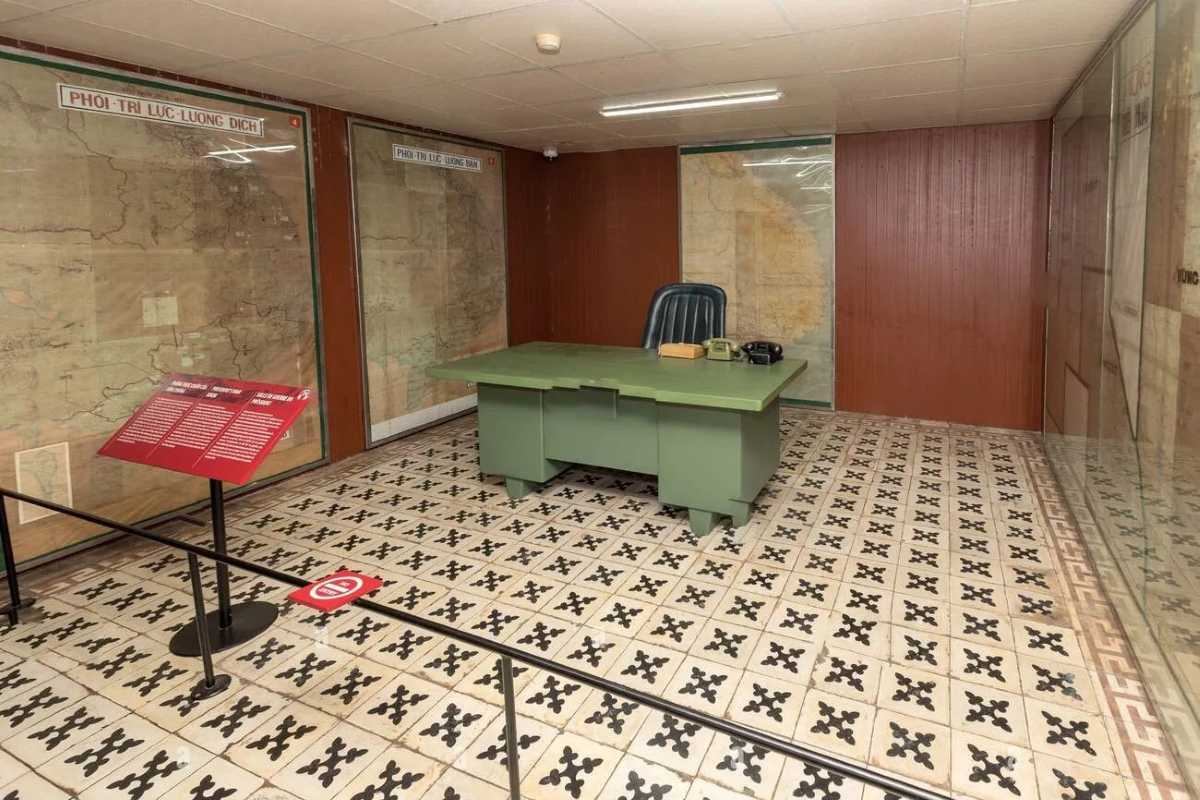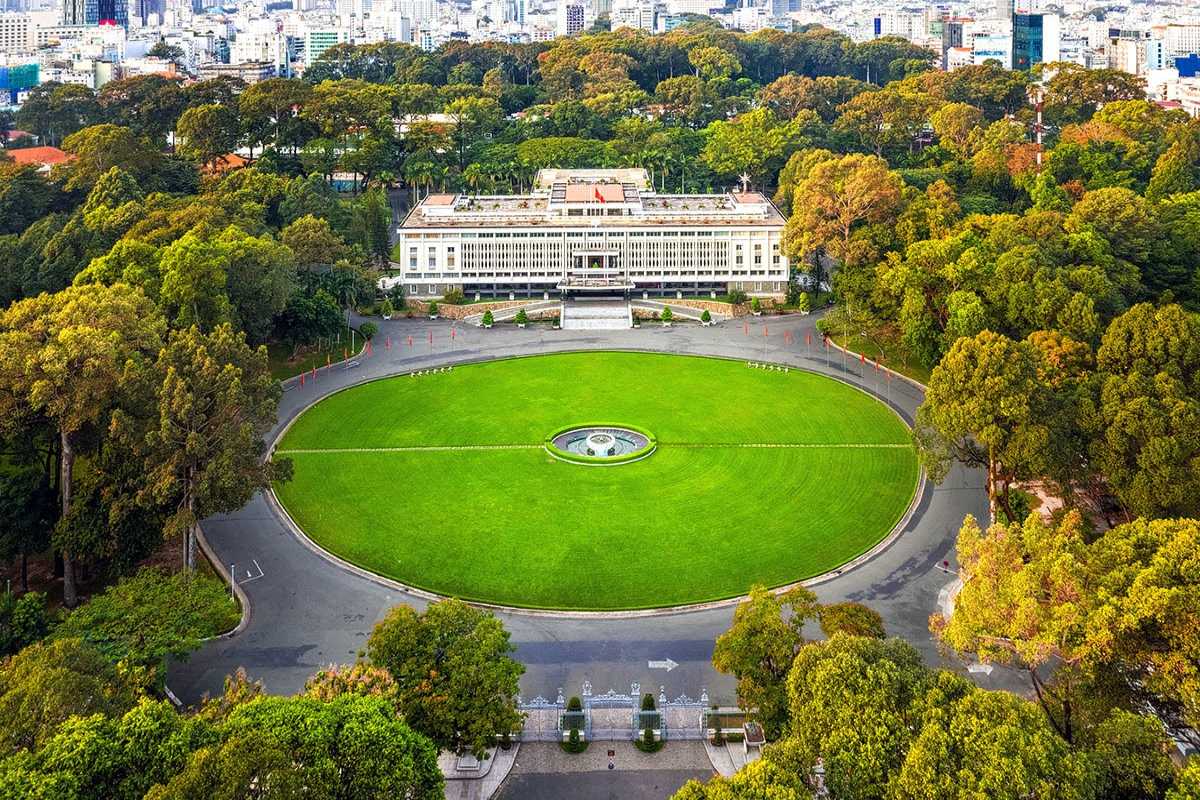Independence Palace Saigon: Discover Vietnam’s Historic Heart
The Independence Palace in Saigon, also known as the Reunification Palace, stands as one of the most iconic landmarks in Vietnam, a place where history, architecture, and the spirit of resilience converge. For decades, this palace has been more than just a building; it has been a silent witness to the nation’s journey through times of war, peace, and reunification. Visitors walking through its gates step into a world where every wall, room, and artifact narrates a profound story of transformation—from colonial rule to independence, and ultimately, to the reunification that reshaped the country. It is here that the powerful echoes of Vietnam’s past come to life, offering travelers a unique window into the cultural and historical fabric of this dynamic nation.
Imagine standing at the foot of this grand palace, where French-inspired architecture meets Vietnamese heritage, and realizing that this very spot is where pivotal moments in Vietnamese history unfolded. The Independence Palace is more than just a tourist site; it is a portal into the Vietnam War, a reminder of the country’s struggle for peace, and a symbol of Vietnam's enduring strength. Visitors are often struck by the palace’s distinct architectural beauty, a masterpiece by Ngo Viet Thu, which fuses Eastern and Western influences to embody Vietnam’s journey from division to unity. From the bamboo-inspired latticework on the facade to the lush green gardens surrounding the palace, every detail reflects a blend of traditional motifs and modern aspirations, making it a must-visit for those who seek a deeper understanding of Vietnamese culture.
This historic landmark doesn’t merely tell the story of the past; it also promises an immersive experience, transporting visitors to an era defined by resilience and change. Exploring the basement bunker where military strategies were devised, the grand reception rooms that hosted key political discussions, and the famous tank on the palace grounds—all these elements make the Independence Palace a unique, tangible encounter with history. Each chamber and corridor is filled with reminders of Vietnam’s turbulent path to reunification, evoking a profound respect for the sacrifices and determination that led to the country’s present-day unity. This is not just a tour; it’s a journey that resonates deeply, leaving a lasting impression on every visitor.
Those who enter the Independence Palace can expect not only to witness an architectural marvel but to gain insights into Vietnam’s enduring spirit. Here, visitors find themselves surrounded by artifacts that once belonged to national leaders, symbols of unity and peace, and remnants of a complex era. Through this experience, travelers come to appreciate not only Vietnam’s past but its vibrant present, making the Independence Palace an unmissable stop for anyone visiting Ho Chi Minh City. In each moment spent within its walls, visitors are invited to reflect, learn, and connect with a history that is as resilient as it is inspiring.
Whether you're a history enthusiast, an architecture lover, or simply a curious traveler, the Independence Palace offers a rare opportunity to step back in time, appreciate the richness of Vietnamese culture, and witness firsthand the resilience of a nation that fought hard to reclaim its identity.
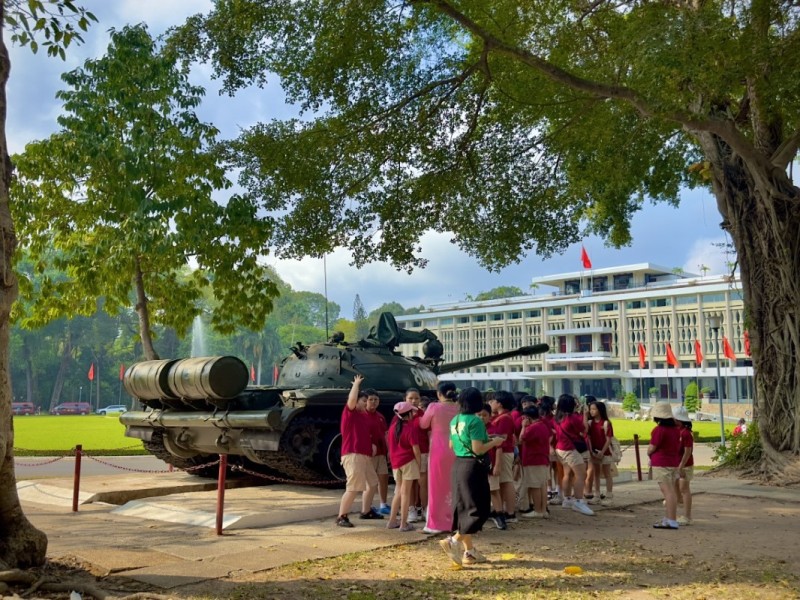
Introduction to the Independence Palace: Vietnam’s Historical Icon in Saigon
The Independence Palace, also known as the Reunification Palace, holds a unique place in Vietnam’s history and is a landmark that has become synonymous with the country's journey toward independence. Nestled in the vibrant city of Saigon (Ho Chi Minh City), this palace has witnessed some of the most pivotal events in Vietnam’s modern history. Visiting the Independence Palace is more than just a historical excursion; it’s an immersion into the culture, architecture, and resilience of the Vietnamese people. With its distinct architectural blend and compelling historical significance, the Independence Palace draws thousands of visitors each year. Each corner, room, and corridor of the palace tells a story—a narrative of conflict, triumph, and the indomitable spirit of Vietnam.
Imagine stepping into a world where each artifact has borne witness to struggles, diplomacy, and ultimate peace. Travelers who enter the Independence Palace do more than explore an architectural wonder; they walk through the corridors of Vietnam’s past, feeling the palpable energy of a country’s determination to emerge united and strong. The significance of this place makes it one of the top destinations in Saigon for history enthusiasts, culture lovers, and anyone intrigued by Vietnam’s journey.

The Unique Story of Independence Palace in Saigon
The story of the Independence Palace begins in the 19th century with the construction of Norodom Palace, which served as the residence of the Governor-General of French Indochina. This grand structure symbolized French colonial power in Vietnam, showcasing European architectural influence amidst Saigon’s growing landscape. However, as the tides of history shifted and the country moved towards independence, this building would come to represent something much deeper for the Vietnamese people—a journey from colonization to sovereignty.
In the early 1960s, the palace was rebuilt by Ngo Viet Thu, a celebrated Vietnamese architect who sought to blend modernity with Vietnamese traditions. The new palace, finished in 1966, embodied this vision, combining modern architectural elements with cultural symbolism that emphasized peace, resilience, and unity. For nearly a decade, it served as the Presidential Palace for South Vietnam’s government, where crucial decisions were made during the Vietnam War.
April 30, 1975 - The Day That Defined Independence
One of the most historic events in the Vietnam War unfolded on April 30, 1975, the day when North Vietnamese tanks breached the gates of the palace, marking the end of the conflict and the reunification of Vietnam. This powerful moment transformed the palace from a symbol of division to one of unity. The iconic Tank 843, now displayed on the palace grounds, commemorates that fateful day when Vietnam’s aspirations for peace were realized. Today, visitors can see the original tank, preserved as a reminder of the resilience and sacrifices that paved the way for Vietnam’s independence.
Architectural Marvels of the Independence Palace
Designed by Ngo Viet Thu, the Independence Palace is a masterpiece that marries Vietnamese architectural elements with modernist features. The palace sprawls across 120,000 square meters, with its unique design representing harmony, balance, and simplicity. Upon arrival, visitors are greeted by a stunning facade, marked by concrete latticework inspired by bamboo and decorative elements that reflect Vietnamese cultural motifs.
Inside, each room is adorned with unique features, from intricate wood carvings to traditional art that enhances the palace's historic appeal. A fascinating aspect of the palace’s design is the use of feng shui principles that influence everything from the layout to the orientation of each room, creating an atmosphere of peace and tranquility despite the palace’s turbulent history.
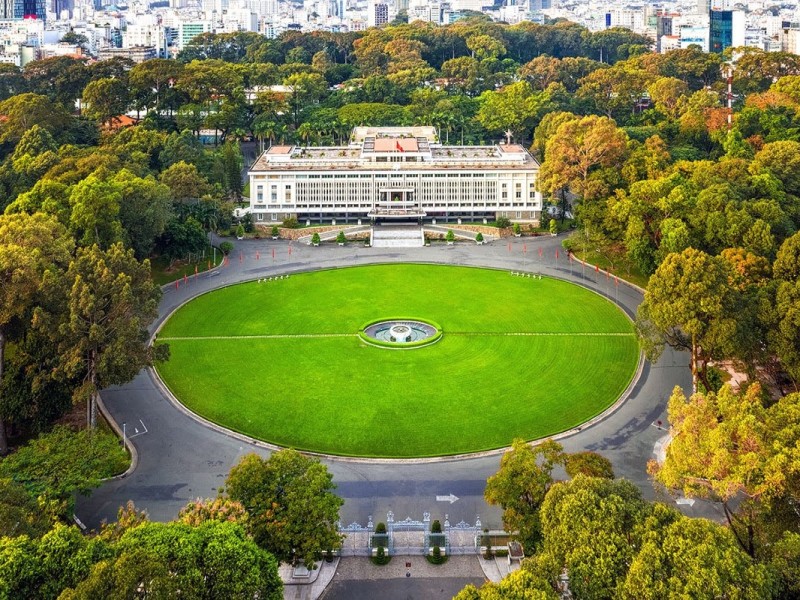
Key Attractions and What to Expect Inside the Independence Palace
Beyond its imposing exterior, the Independence Palace houses numerous rooms, each with its distinct purpose and story. Visitors can wander through a series of chambers, each uniquely furnished to reflect the era's opulence and grandeur. The palace’s basement is a particularly intriguing area, revealing the extensive measures taken for wartime safety, with bunkers, radio transmitters, and escape routes. These hidden spaces add a thrilling layer to the visitor experience, offering a glimpse into the secretive side of the palace’s history.

The Presidential Chamber and Banquet Hall
In its heyday, the Independence Palace’s Presidential Chamber served as the heart of South Vietnam’s administrative operations, where leaders would meet to discuss military and political strategies. Ornate furnishings and luxurious decor reflect the palace’s prominence and its role in South Vietnam’s governance. The Banquet Hall, another highlight, hosted countless dignitaries and officials, adding an air of sophistication and elegance to the palace.
The War Command Room and Bunker
The War Command Room stands as a powerful reminder of Vietnam’s military history. Filled with maps, radio equipment, and strategy boards, this room played a pivotal role during the Vietnam War. Visitors can also explore the basement bunker, equipped with secure communication systems and emergency supplies. Designed to withstand attacks, this bunker allowed government officials to continue operations during times of crisis, underscoring the intense period of conflict.

A Symbol of Unity and Peace
Today, the Independence Palace serves not just as a historical site but as a national monument celebrating Vietnam’s unity and independence. As a preserved cultural heritage site, it allows visitors to reflect on the country’s past struggles and triumphs. Each part of the palace—from its architecture to its preserved artifacts—represents a chapter in Vietnam’s rich history. Visiting the Independence Palace is more than a tour; it’s an opportunity to appreciate the resilience of a nation that overcame adversity to shape its destiny.

Practical Information for Visitors to the Independence Palace
To fully experience the significance of this landmark, it’s essential to plan your visit with the right information in hand. The palace is located at 135 Nam Ky Khoi Nghia Street, Ben Nghe Ward, District 1, Ho Chi Minh City, in the heart of Saigon, making it accessible from numerous points within the city. The area surrounding the palace also features nearby landmarks like 30-4 Park and Tao Dan Cultural Park, both of which offer green spaces to relax and unwind.
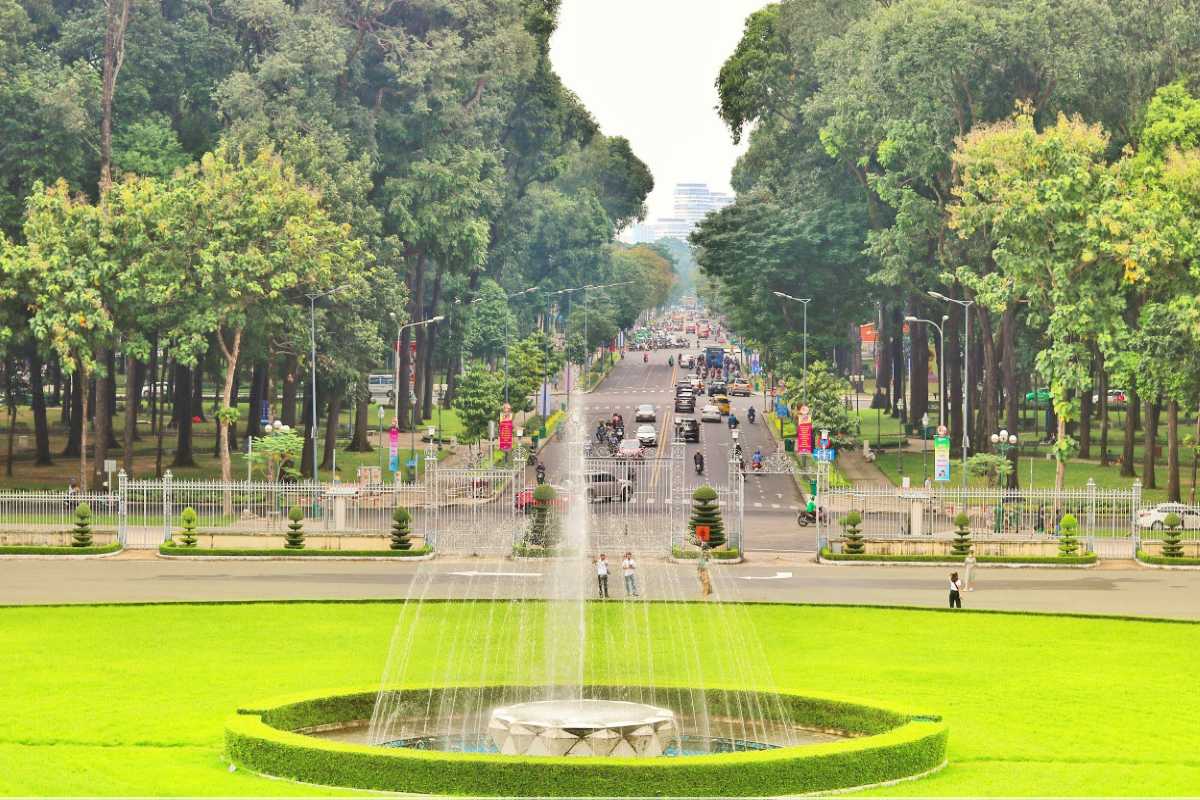
Opening Hours and Entrance Fees
The palace is open every day from 8 a.m. to 4:30 p.m., making it convenient for tourists to schedule a visit within a day of exploring the city. Ticket prices are very affordable, making it accessible for visitors of all ages: 40,000 VND for adults, 20,000 VND for students, and 10,000 VND for children. These rates ensure that the site remains accessible to both locals and international visitors, promoting cultural exchange and understanding.
Best Times to Visit and Nearby Attractions
For a quieter experience, consider visiting early in the morning or later in the afternoon. The palace grounds are busiest on weekends and during local holidays, so planning ahead is essential for travelers who prefer a less crowded experience. After visiting the palace, travelers can easily access nearby attractions such as the War Remnants Museum, Notre-Dame Cathedral Basilica of Saigon, and Ben Thanh Market to round out a day filled with exploration and insight into Vietnam’s vibrant heritage.
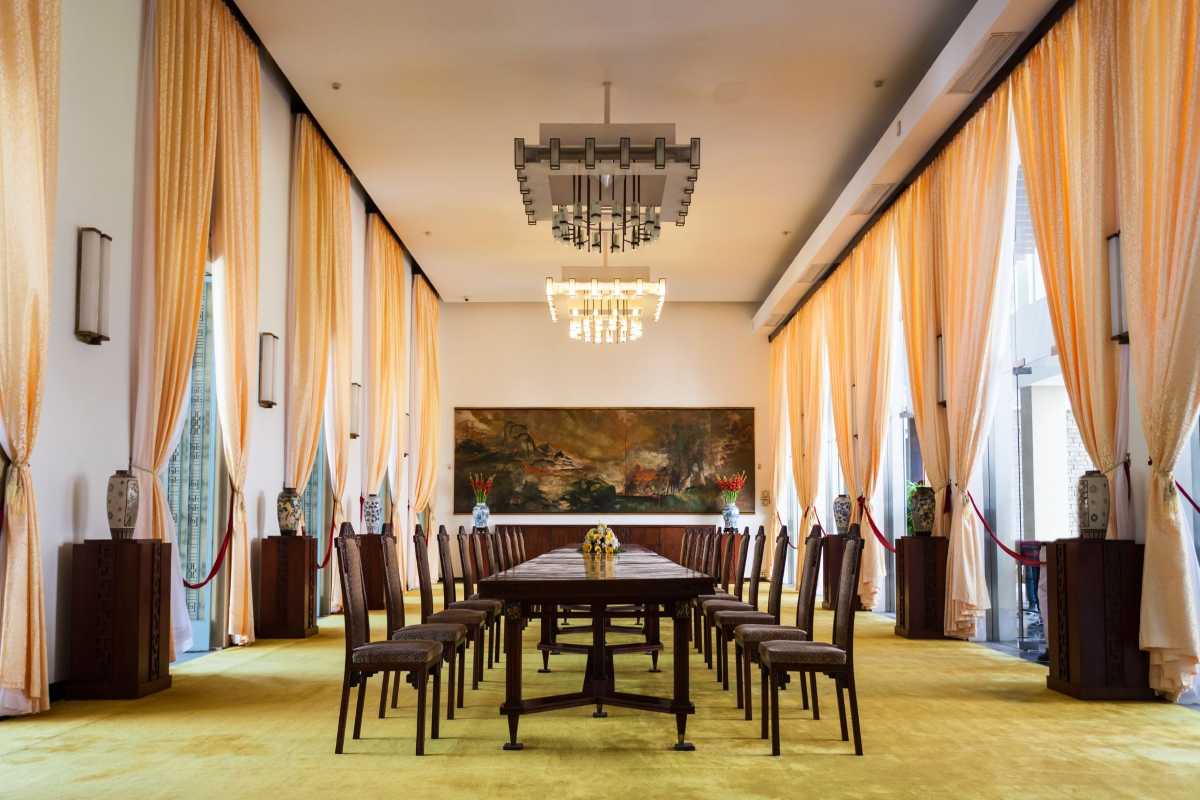
Exploring Every Corner of Independence Palace
Walking through the Independence Palace is like stepping back in time, where each room, hallway, and courtyard transports visitors to the heart of Vietnamese history and the moments that shaped the nation. The palace, now preserved as a historic monument, allows visitors to immerse themselves in the rich narratives of the past while appreciating the architectural mastery of Ngo Viet Thu. From the tranquil gardens outside to the historically significant chambers within, each space reflects Vietnam’s unique cultural identity and the events that transformed it. Every visitor here can expect not only to see Vietnam’s historical artifacts but to feel the weight of a legacy that continues to resonate today. Each corner of the Reunification Palace offers a new discovery, deepening the connection between the visitor and the palace’s vibrant story.
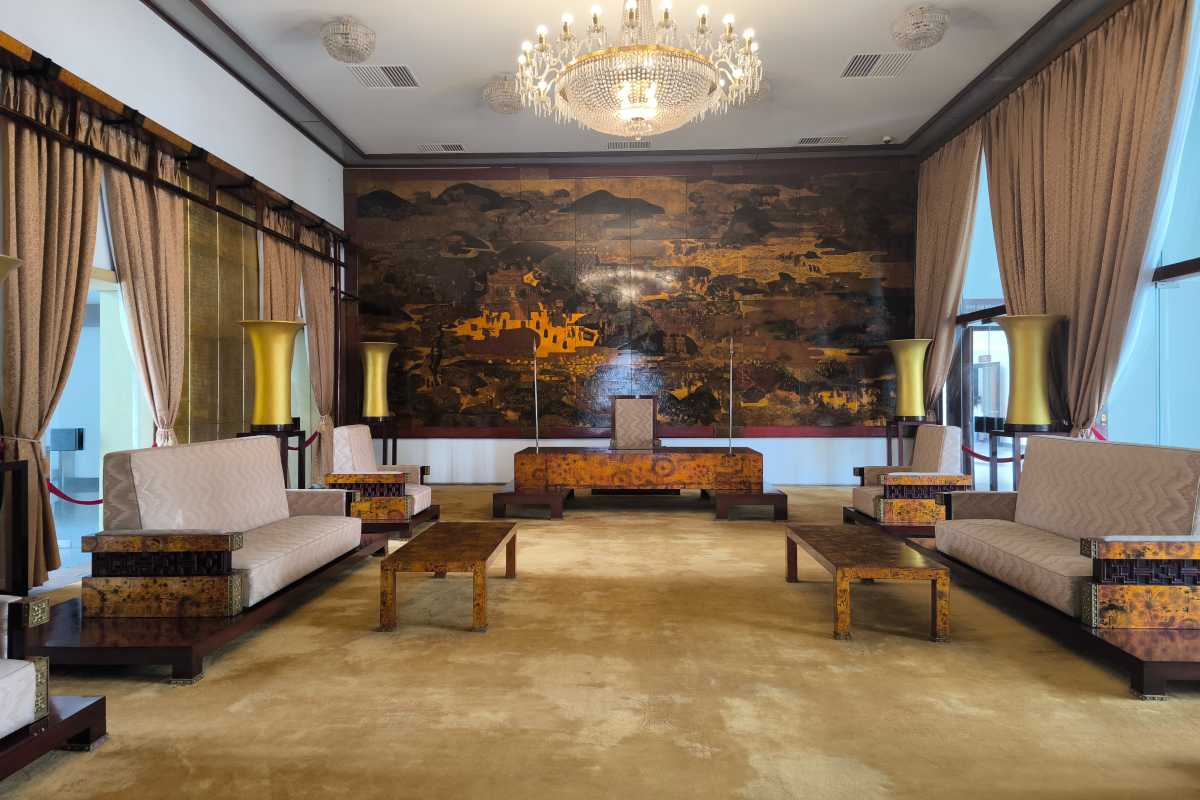
Exterior Marvels and Landscaped Gardens
The grandeur of the Independence Palace begins outside, where lush gardens and meticulously landscaped courtyards create a peaceful sanctuary within bustling Saigon. The sprawling green space surrounding the palace is not only a visual delight but also a symbolic representation of Vietnam’s respect for nature and harmony. Visitors are welcomed by serene lotus ponds, whose blossoms represent purity and resilience—a reflection of Vietnam’s journey through adversity to peace. The palace grounds offer a place for quiet reflection, where visitors can escape the city’s energy and immerse themselves in a setting that exudes tranquility and strength.
Architectural Symbolism in the Courtyard and Gardens
The palace’s courtyard and gardens are designed with profound cultural symbolism, blending architectural beauty with elements of Vietnamese heritage. The lotus ponds, for example, are not merely decorative; they embody purity and renewal in Vietnamese culture. The use of bamboo-like latticework, which adorns the palace’s exterior, reflects traditional design while symbolizing resilience and flexibility. This thoughtful incorporation of symbolism turns the palace’s gardens into more than just landscaping; they become an extension of Vietnam’s cultural values, allowing visitors to feel a deeper connection to the land and its traditions.
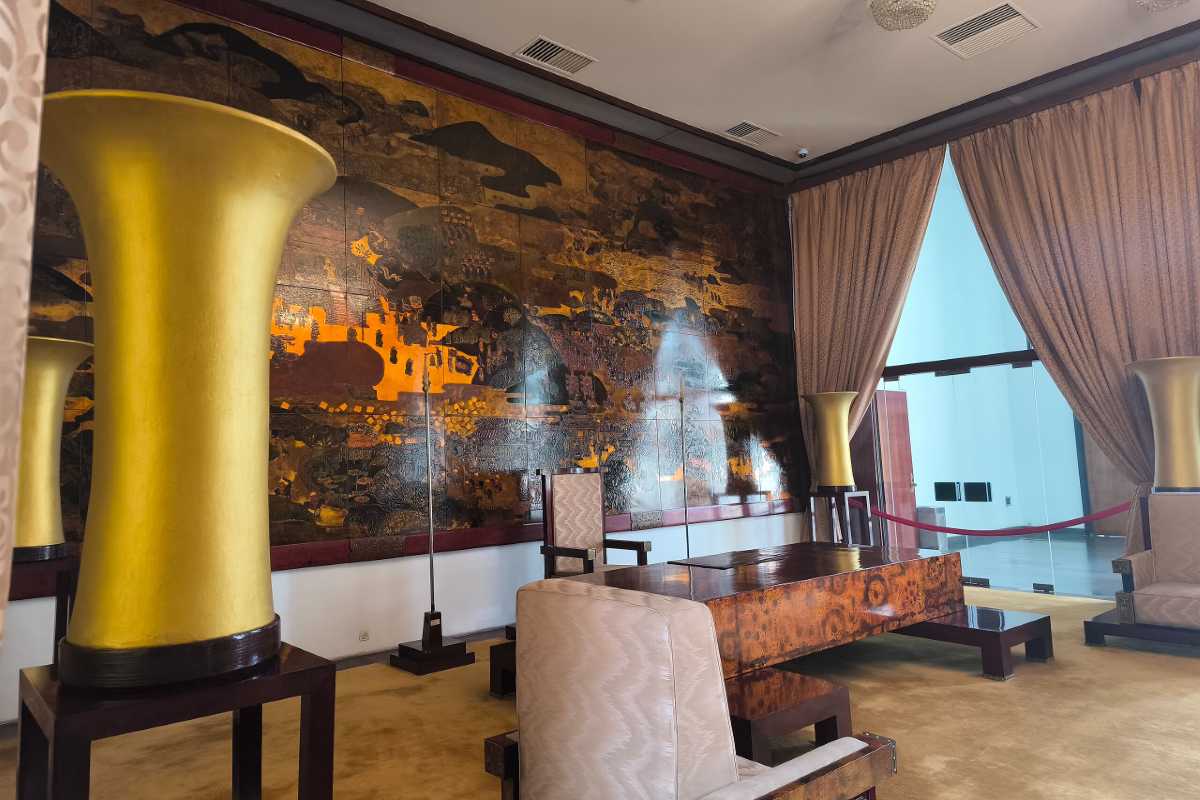
The Intriguing Interior Rooms of the Palace
Inside the palace, visitors are greeted with an array of rooms, each with a unique design, purpose, and historical significance. These rooms were once the settings for major political events and diplomatic gatherings, and today, they remain filled with artifacts and decor that capture the elegance and complexity of Vietnam’s past. Key rooms, like the Credentials Room, where foreign ambassadors were once received, and the Chamber, where strategic discussions were held, allow visitors to glimpse the administrative life of a bygone era. Each room serves as a testament to the decisions, discussions, and moments that ultimately shaped the nation.
The Presidential Bunker – A Glimpse into Wartime Operations
One of the most compelling features of the Independence Palace is the Presidential Bunker located deep below the main structure. This bunker served as the command center during intense periods of the Vietnam War, equipped with strategic maps, communication tools, and secure rooms designed to protect officials. Walking through the bunker, visitors are transported to a time when critical wartime decisions were made, providing an authentic insight into the era’s military strategies and the tense atmosphere of the time. It’s here that visitors gain a palpable sense of the challenges and sacrifices that the palace’s occupants faced, enhancing the historical significance of the tour.

Independence Palace Visitor Tips and Travel Guide
Planning a visit to the Independence Palace can be an enriching experience if you come prepared. As one of Saigon’s most celebrated attractions, the palace is easily accessible, affordable, and offers a range of sights to explore at your own pace. Whether you’re interested in history, architecture, or simply looking for a peaceful retreat within the city, understanding the best way to navigate the palace will help maximize your experience. From entrance fees and operating hours to helpful tips for avoiding crowds, here’s everything you need to know to make the most of your visit.
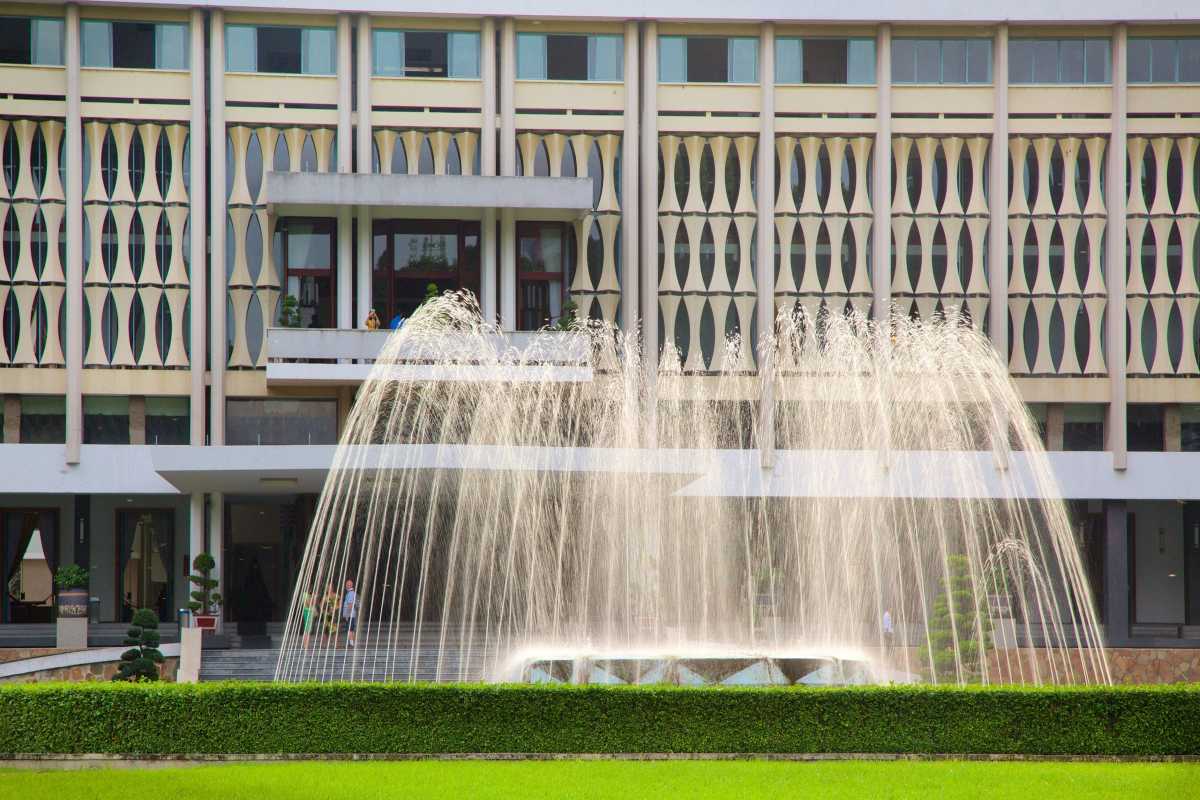
Getting There – Convenient Access Options
Located in the heart of Ho Chi Minh City, the Independence Palace is conveniently accessible by a variety of transportation options. For those already exploring District 1, walking is a popular choice, allowing visitors to take in the surrounding attractions and landmarks along the way. Alternatively, visitors can easily access the palace by taxi or rideshare services, which are widely available and reliable in Saigon. Public transportation, including buses, also provides a cost-effective option, with several routes stopping nearby. This accessibility makes it simple for visitors to incorporate the palace into their Saigon travel itinerary.
Navigating the Palace Grounds with Ease
The palace’s layout is straightforward, but with so many areas to explore, it can be helpful to have a navigation plan. Visitors are encouraged to begin their journey at the main entrance, taking in the grand facade before exploring the gardens and exterior features. Inside, a self-guided tour is often the best way to experience the palace at a comfortable pace, moving from the reception rooms to the bunker and other notable rooms. By prioritizing key areas like the Credentials Room and Presidential Bunker, visitors can ensure they experience the palace’s highlights and leave with a comprehensive understanding of its significance.
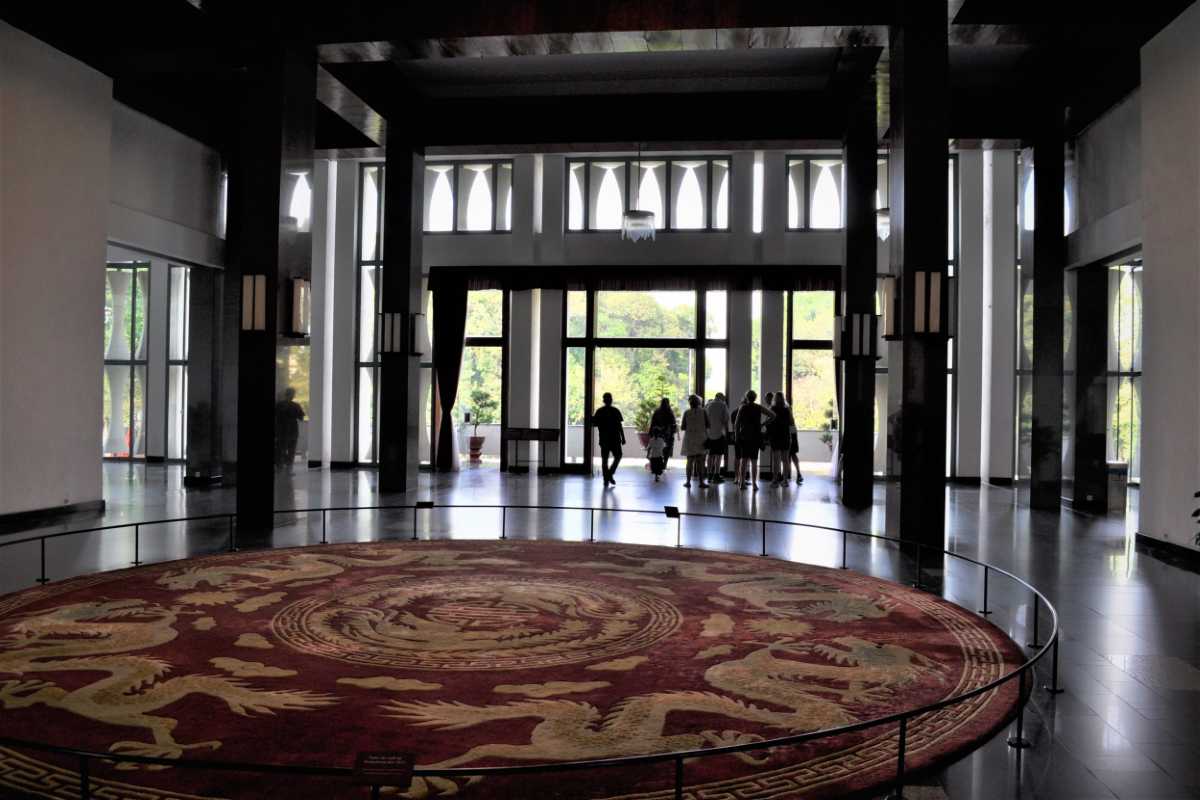
Discovering Art and Artifacts of Historical Value
The Independence Palace is home to an impressive collection of artifacts that provide a window into the lives of Vietnam’s past leaders and the turbulent events that defined the nation. Each artifact within the palace has been preserved to maintain its historical context, from the UH-1 helicopter and tank displayed on the grounds to the personal items of former president Nguyen Van Thieu. These relics are more than just pieces on display; they serve as powerful reminders of the sacrifices, decisions, and resilience that helped shape modern Vietnam. Visitors who take the time to explore these artifacts leave with a deeper appreciation for the country’s complex history and the values that continue to guide its people.

The UH-1 Helicopter and Vietnam War Relics
One of the most iconic artifacts at the palace is the UH-1 helicopter, which sits prominently on the rooftop as a stark reminder of the Vietnam War. Alongside the helicopter, visitors will find a preserved tank on the grounds, symbolizing the end of the war and the reunification of the country. These relics allow visitors to reflect on the conflict’s impact on Vietnam and the enduring spirit of the nation. The helicopter and tank serve not only as historical artifacts but as symbols of resilience, bridging the past and present for those who come to understand Vietnam’s journey through these artifacts.
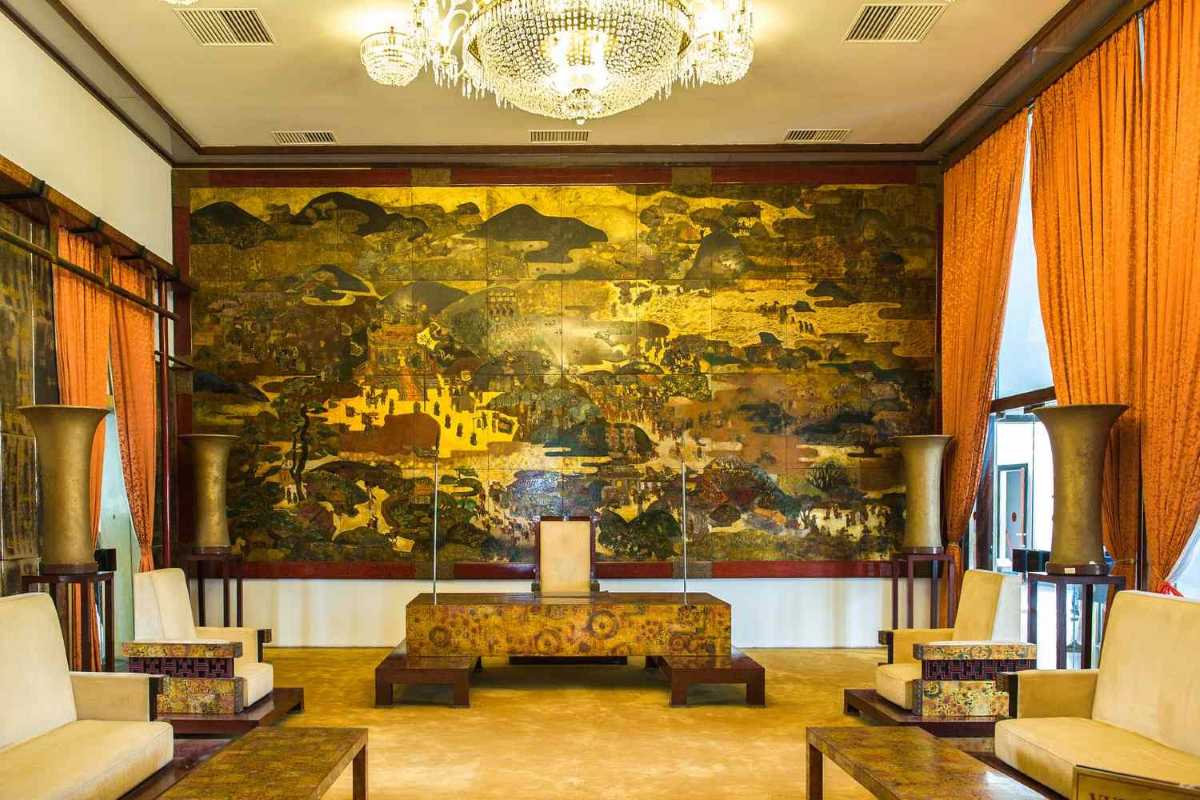
Why the Independence Palace is a Must-Visit Destination in Saigon
For anyone visiting Saigon, the Independence Palace is not just another landmark—it’s a transformative experience that offers an intimate look into Vietnam’s cultural resilience and its remarkable journey toward unity. This palace isn’t merely a structure; it embodies the soul of a nation that has overcome immense challenges, making it a must-see for travelers seeking to understand the spirit of Vietnam. Imagine standing before the palace’s grand facade, surrounded by the same gardens and walkways where history’s pivotal moments unfolded, feeling the weight of Vietnam’s journey toward peace and unity.
As you explore the palace’s rooms, you’re not just witnessing architecture or artifacts; you’re walking through the footsteps of leaders, soldiers, and citizens who believed in the dream of a united Vietnam. The Independence Palace offers an immersive experience where visitors can truly connect with the resilience of a people who, despite countless challenges, emerged stronger and united. For lovers of history, culture, and architecture, a visit here is more than an attraction—it’s a profound journey that makes the palace one of the must-visit places in Saigon.

Experience the Spirit of Vietnamese Resilience and Unity
At the heart of the Independence Palace is a story of resilience and unity that has become symbolic for Vietnam. The palace stands as a powerful reminder of the sacrifices and struggles that defined the country’s path toward independence. Every corner of this historic site reflects the determination of a people who have endured and overcome. From the grandeur of the Presidential Chamber to the solemnity of the War Command Room, the palace showcases the courage of leaders who faced adversity with unwavering strength.
The emotional impact of visiting these rooms—knowing that critical decisions were once made here under extreme pressures—invokes a deep respect and admiration for Vietnam’s enduring spirit. The palace’s design, with its seamless integration of Vietnamese cultural symbols and elements of resilience, evokes a sense of national pride and unity. For visitors, standing in these rooms, filled with the echoes of history, is a humbling reminder of the power of unity and perseverance in the face of immense challenges.
A Journey Through Vietnam’s Transformational History
Visiting the Independence Palace is like embarking on a journey through Vietnam’s transformational history, where each room and design element tells a story of change and growth. Built upon the foundations of the original Norodom Palace from the colonial era, the Independence Palace embodies Vietnam’s journey from colonization to independence and eventually to reunification. The transition is apparent in every architectural feature, as the palace reflects the country’s shift from French influence to a symbol of Vietnamese self-determination.
As you wander through the palace, you feel the progression of Vietnam’s history—from a nation under foreign rule to one that bravely pursued its path to freedom. Each room, with its carefully curated decor and historic significance, adds another layer to this story. From the luxurious interiors inspired by Vietnamese aesthetics to the strategic bunkers that reveal the intense days of the Vietnam War, the palace is a testament to a journey of transformation. Through these spaces, visitors gain a deeper understanding of Vietnam’s resilience and the extraordinary journey to independence.
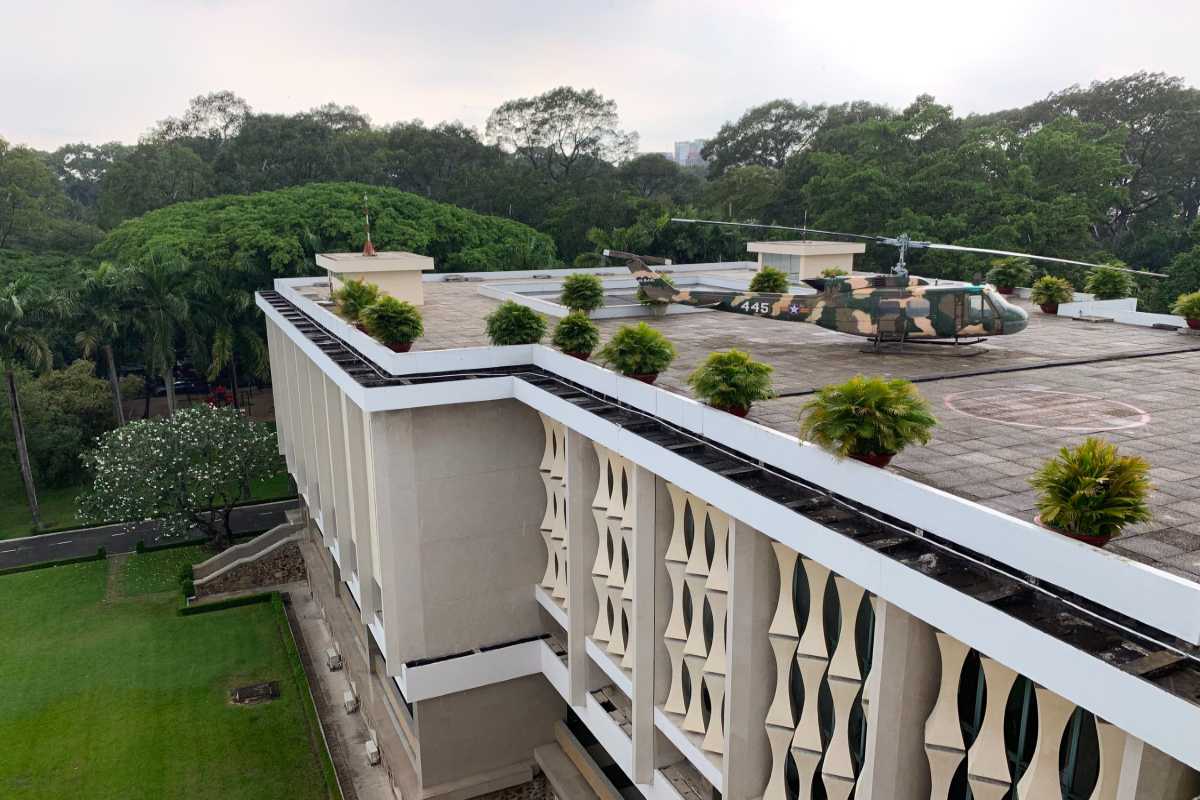
Emotional Connection Through Architecture and Design
The architecture and design of the Independence Palace evoke a profound sense of pride and connection to Vietnam’s cultural heritage. Designed by the renowned architect Ngo Viet Thu, the palace combines elements of Vietnamese tradition with modernist aesthetics, creating a unique space that resonates deeply with those who walk its halls. The intricate latticework, inspired by bamboo, represents flexibility and endurance, while the lotus ponds symbolize purity—a reflection of the Vietnamese spirit.
Every design choice within the palace serves to connect visitors to the essence of Vietnam’s culture. The building’s orientation, layout, and decor were all meticulously planned according to feng shui principles, imbuing the palace with harmony and balance. This thoughtful approach makes the palace more than just an architectural marvel; it becomes a place where visitors feel a part of the Vietnamese story. As you stand within these spaces, the design envelops you, evoking feelings of belonging and pride. Visitors leave with a sense of connection, understanding, and admiration for a country that has crafted its future with the utmost respect for its heritage.
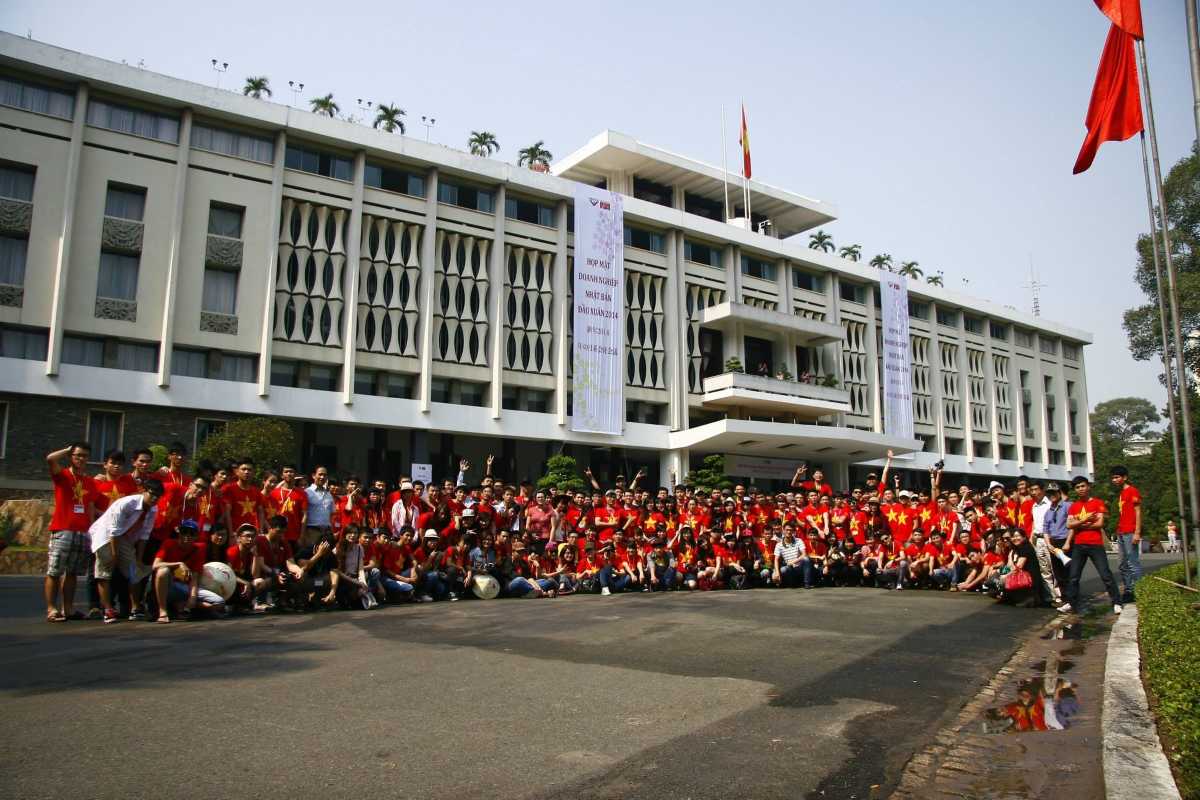
Make the Independence Palace Part of Your Saigon Itinerary
The Independence Palace is more than just a historic site; it’s an essential stop on any Saigon itinerary. This palace offers travelers a rare opportunity to explore Vietnam’s unique journey to independence, blending architecture, history, and culture in one unforgettable experience. For those visiting Ho Chi Minh City, the Independence Palace is not to be missed. With its central location and accessibility, adding this iconic landmark to your day is simple, whether you’re a solo traveler, family, or part of a guided tour. The palace’s convenient location in District 1 places it within reach of many other popular sites, making it an ideal starting point for an enriching day of exploration.
A visit here promises more than just sightseeing—it offers a deeply personal look into Vietnam’s spirit of resilience, unity, and peace. Whether you're already exploring Saigon’s vibrant streets or planning your itinerary, the Independence Palace provides an experience that is both reflective and educational, perfect for anyone wanting to dive deeper into Vietnam’s cultural heritage.

Booking Your Tickets and Planning Your Visit
Visiting the Independence Palace is straightforward, with ticket prices designed to be accessible for all visitors. Admission fees are affordable: 40,000 VND for adults, 20,000 VND for students, and 10,000 VND for children, making it an excellent addition to your travel plans without stretching the budget. Tickets can be purchased directly at the entrance, but during peak tourist seasons, it’s a good idea to arrive early or book through reputable tour agencies to avoid waiting times. With options for self-guided and guided tours, visitors can choose their pace and style for exploring the palace.
If you’re planning to visit on a weekend or public holiday, arriving early ensures a quieter experience, allowing you to immerse yourself in the palace’s historic ambiance fully. The opening hours are from 8 a.m. to 4:30 p.m. every day, providing ample time to explore both the gardens and the interior.
Guided Tours and Enhancing Your Visit
For those who want a deeper understanding of the palace’s history, guided tours are an excellent choice. Knowledgeable guides bring the palace’s stories to life, offering insights into the events, leaders, and moments that define Vietnam’s historical journey. From personal anecdotes to detailed descriptions of artifacts, a guided tour adds layers of meaning to the visit, making it a memorable experience. If you prefer exploring at your own pace, self-guided audio tours are available, allowing you to delve into the palace’s past with flexibility and independence.
Regardless of your choice, each tour offers a different perspective on the palace, helping you understand the full depth of its significance. Visitors who take the time to immerse themselves in the palace’s narrative leave with a profound respect for Vietnam’s resilience and the people who played pivotal roles in its history.

Why the Independence Palace Is a Must-See on Your Saigon Journey – Experience Vietnam’s History and Unity
The Independence Palace is much more than an architectural landmark or a site on a tourist map; it is a testament to Vietnam’s enduring spirit and its relentless journey toward peace, unity, and independence. As one of the most historic sites in Saigon, the palace offers travelers a unique opportunity to step inside Vietnam’s history, connecting past events with the nation’s present-day pride. Walking through its halls, witnessing its artifacts, and absorbing the stories embedded in its walls, visitors gain an intimate understanding of Vietnam’s cultural resilience and determination.
For those visiting Ho Chi Minh City, the palace is an essential part of the journey, allowing for moments of reflection, inspiration, and connection. As you stand within its gardens or explore its iconic rooms, you feel the powerful legacy of the people who once walked those halls, and the sacrifices they made for the nation’s future. This is a place that leaves an impact, reminding visitors of the values of unity, peace, and resilience that define Vietnam’s spirit.
Whether you’re drawn by the rich history, the architectural beauty, or the inspiring story of a country that overcame immense challenges, the Independence Palace invites you to be part of its narrative. Make sure to include this iconic landmark in your Saigon itinerary—it’s more than a visit; it’s an experience that will stay with you long after you leave. Embrace the opportunity to walk through Vietnam’s history, connect with its past, and appreciate the cultural richness that continues to shape its future.
Trường Sơn
Faqs
The Independence Palace in Saigon is a key symbol of Vietnam’s history, especially during the Vietnam War. It served as the presidential residence of South Vietnam and was the site where the war ended in 1975 with the fall of Saigon.
This palace witnessed pivotal events, including diplomatic meetings and military decisions. Its architecture reflects a blend of Vietnamese tradition and modernism, symbolizing national resilience and unity. Visitors explore rooms like the War Command Center and the Presidential Bunker, gaining insight into Vietnam’s struggle for independence.
Discover the rich history and cultural legacy of Independence Palace on your visit to Saigon.
Getting to Independence Palace from District 1 in Ho Chi Minh City is easy due to its central location. It lies within walking distance of major landmarks like Ben Thanh Market and Saigon Notre-Dame Cathedral.
- Walk along Nam Kỳ Khởi Nghĩa Street from District 1 center; the palace is about 1 km southwest.
- Use public buses serving District 1 that stop near the palace.
- Take a taxi or rideshare for quick and convenient access.
- Future metro access via the nearby Ben Thanh Metro Station will enhance connectivity.
Plan your trip ahead to include this historic site as a central part of your Saigon itinerary.
Yes, there are affordable entry fees to visit Independence Palace. The ticket prices are designed to be accessible for all visitors.
- Adults: 40,000 VND
- Students: 20,000 VND
- Children: 10,000 VND
Tickets can be purchased on-site at the entrance. The reasonable cost makes it easy for tourists and locals alike to explore this important historic site.
Make sure to include Independence Palace on your budget-friendly travel plans.
Independence Palace in Saigon is open daily, allowing flexible visiting options.
- Opening hours: 8:00 a.m. to 4:30 p.m. every day
This schedule provides ample time to explore both the palace’s exterior gardens and interior rooms. Arriving early or later in the afternoon can enhance your experience by avoiding peak crowds.
Plan your visit within these hours to fully enjoy this cultural landmark.




